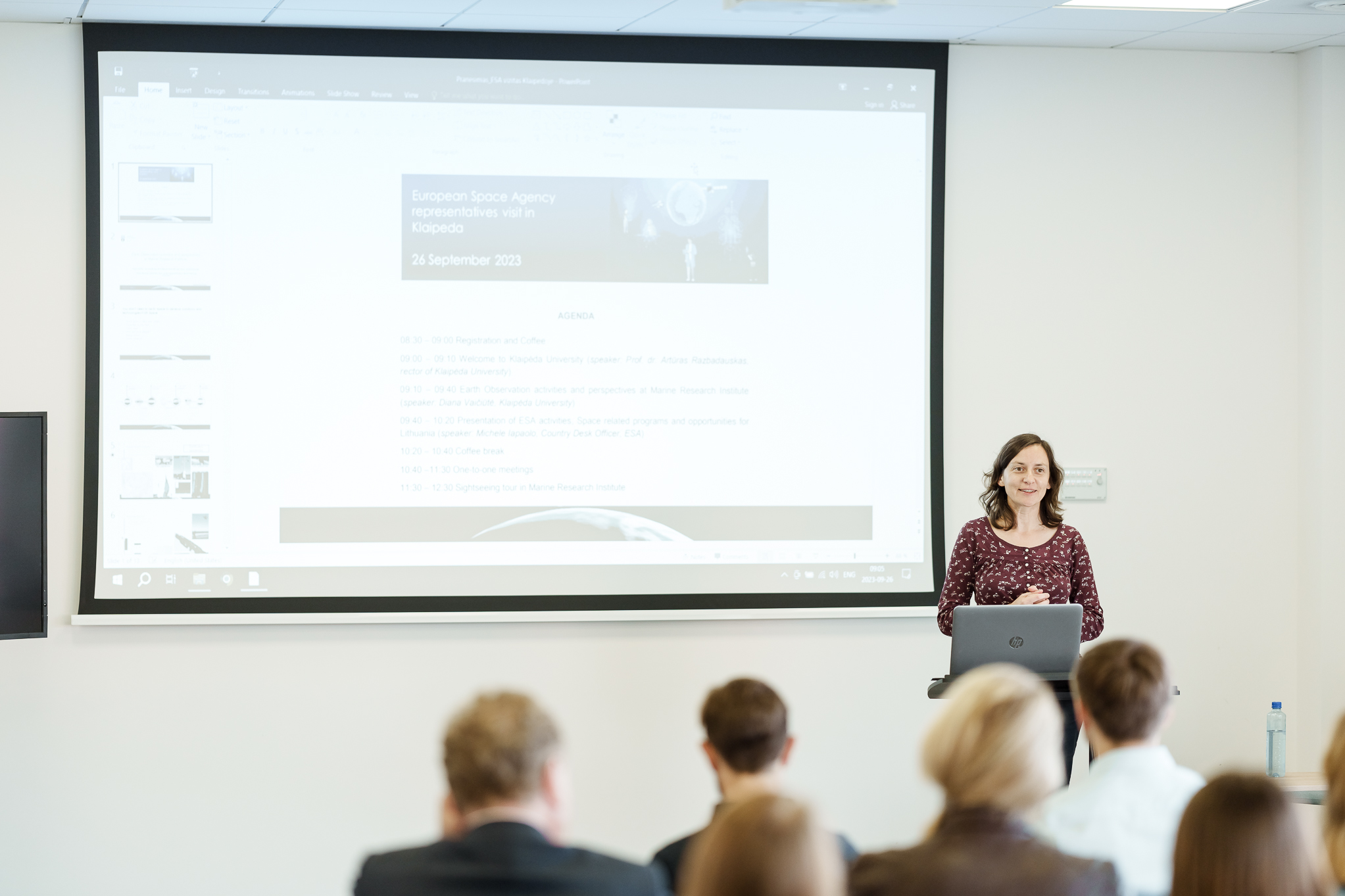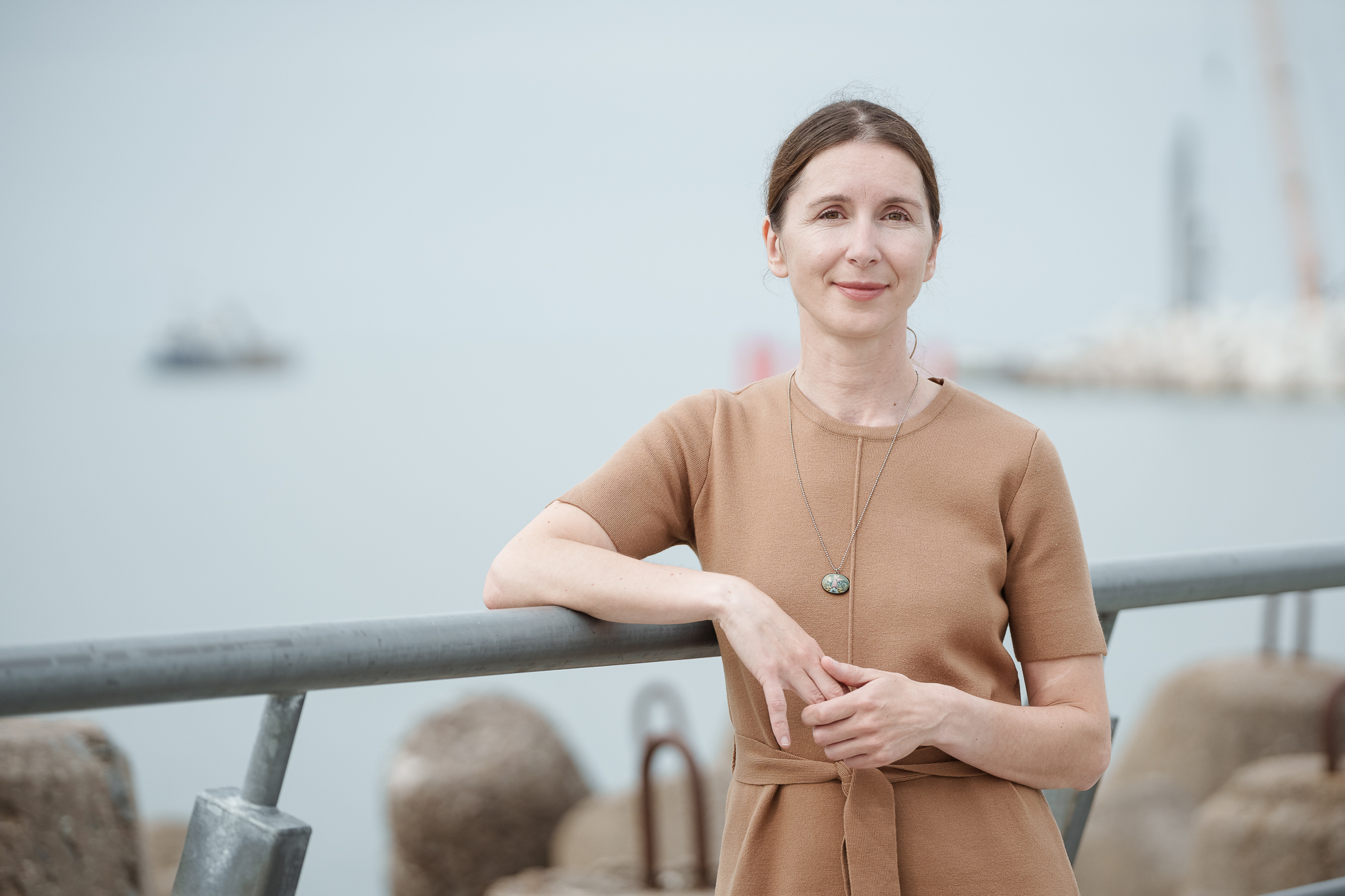|
An automated bathing water quality assessment tool is being developed under the European Space Agency’s EO4Swim project. This tool integrates satellite and drone imagery, field survey data, and machine learning algorithms. This system will enable rapid forecasting of biological risks and real-time notification of residents and responsible authorities. “The system we are developing will, for the first time in Lithuania, enable real-time assessment of the biological risks associated with blue-green algae blooms in various water bodies. This information will be available not only to specialists, but also to everyone – decisions on safety will be based on facts, not guesswork,” says Dr. Diana Vaičiūtė, head of research at Klaipeda University. |
 |
At the same time, KU researchers were the first in Lithuania to apply modern molecular methods in the testing of bathing water quality – digital PCR and portable sequencer, which allows for the extremely fast and accurate identification of dangerous bacteria, including Vibrio. Such technologies allow for a faster response to risks than traditional microbiological tests currently in use.
 |
“Using advanced molecular technologies, we can detect potentially pathogenic bacteria much faster. This means that we can warn people on the same day that the water sample is taken,” emphasizes Dr. M. Kataržytė, who conducts microbiological testing of bathing waters at Klaipeda University. Data from a quantitative Vibrio risk model developed by KU researcher Dr. Martynas Bučas shows that between 4 and 15 infections caused by these bacteria may occur each year in our country due to swimming in the Baltic Sea. Although these projected figures are not high, there is currently no monitoring of Vibrio infections in Lithuania, unlike in Sweden, where it has been in place for almost 20 years and where, for example, 144 cases of infection were detected in 2018. |
Why it matters: bacteria spread quickly and the risk is high
Vibrio bacteria are difficult to monitor in bathing water because their numbers can change very quickly depending on water temperature and salinity. The European Centre for Disease Prevention and Control (ECDC), therefore, uses a model based on these two parameters to predict risks even without direct water samples.
The highest risk of infection is among older people and those with chronic diseases (such as diabetes, liver diseases), and men are more likely to become seriously ill due to biological characteristics related to hormonal and immune differences and free iron concentration in the blood.
Infections caused by Vibrio bacteria can vary from mild gastrointestinal disorders (gastroenteritis) and skin or soft tissue infections to severe, life-threatening conditions, such as sepsis or necrotizing fasciitis, which is caused by V. vulnificus.
KU – the first to identify Vibrio bacteria in Lithuania
In 2017, scientists at Klaipeda University were the first in Lithuania to identify Vibrio vulnificus on our coast, one of the most dangerous species, previously recorded only in other countries bordering the Baltic Sea. Since then, the scope of research has expanded, and other potentially pathogenic species have been identified, including Vibrio alginolyticus and the non-pandemic V. cholerae. All of these species are naturally found in the Baltic Sea, but become more active when the water temperature exceeds 20 degrees Celsius. Their activity can also be stimulated by eutrophication, especially during blue-green algae blooms.
What vacationers should know
The most important recommendation is to avoid swimming in the sea, if you have open wounds, including those caused by recent tattoos, especially on hot summer days when the sea water is warm. Cover wounds with a waterproof plaster, if there is a possibility of contact with sea water. After swimming, immediately wash the wound with clean water and soap or an antiseptic solution, or if you do not have soap or antiseptics, use bottled drinking water. Seek medical attention immediately, if a wound that has been exposed to sea water becomes red, painful, or swollen, especially if these symptoms are accompanied by fever and chills.
We invite you to contribute to creating a safer environment
Water quality tests at bathing sites are carried out as part of Klaipeda University’s Sustainable Coastal Development Excellence Project, in cooperation with the Environmental Health Department of the Institute of Hygiene and the municipalities of Klaipėda City, Klaipėda District, and Plungė District.
A survey of vacationers is currently being conducted to better understand residents’ attitudes towards water quality, threats, as well as the need for information.
So, if you are currently vacationing near a body of water, we invite you to contribute to this research and fill out a short survey to help monitor the water quality of bathing areas: https://forms.office.com/r/gHTEzAXqc3.









